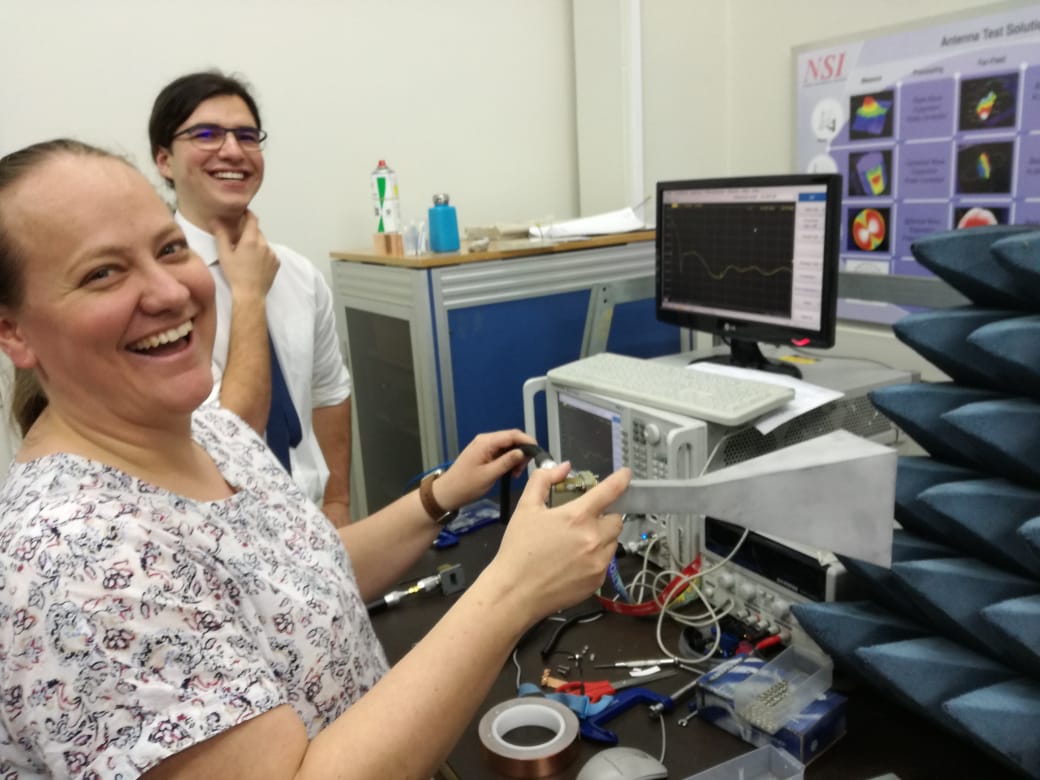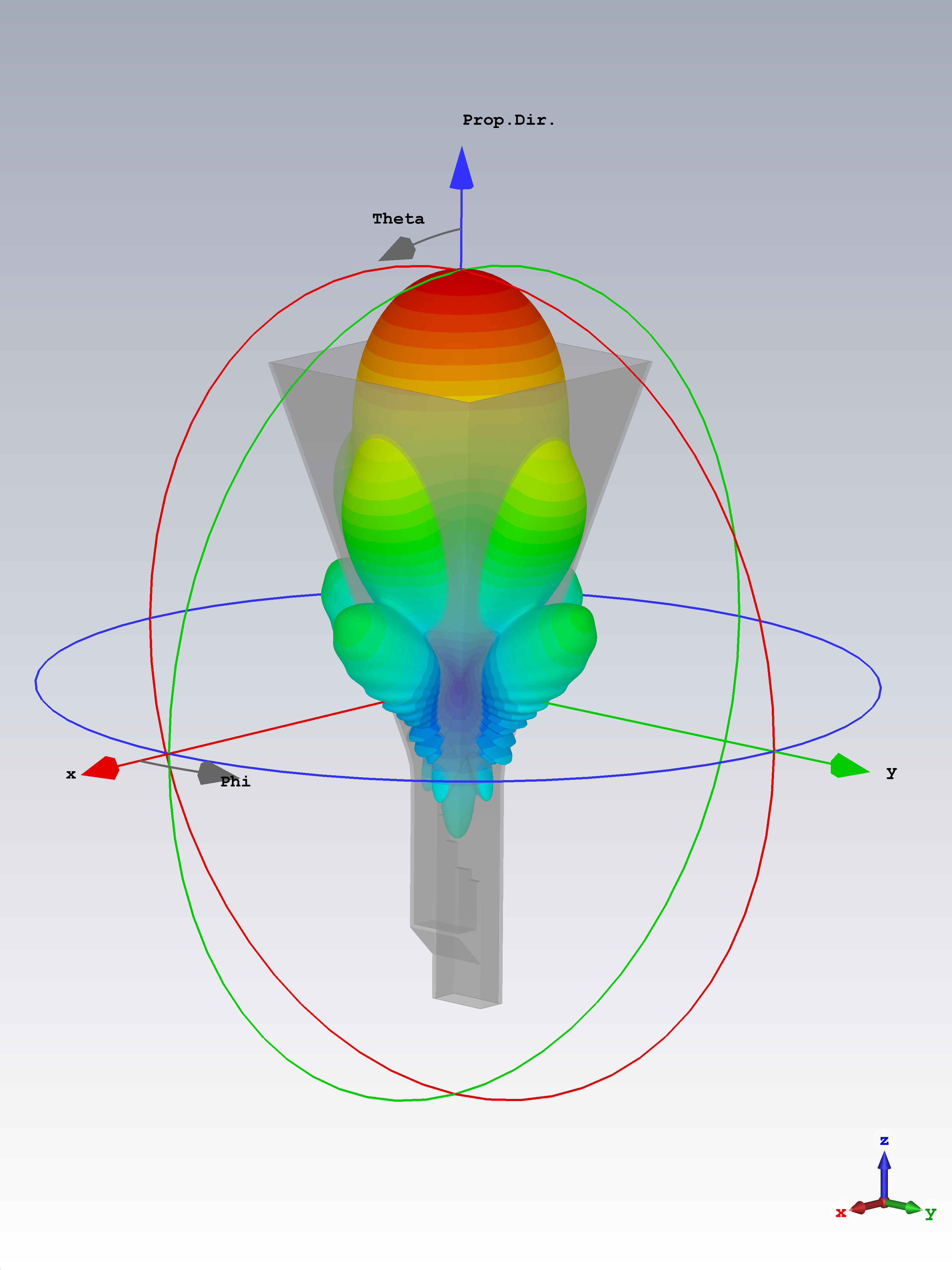Merriam-Webster defines “novel” as “new and not resembling something formerly known or used” and “original or striking especially in conception …”. There is no better description for the 3D printed horn antenna final year student, Kobus Kotzé, recently designed under the supervision of Dr Jacki Gilmore at the Faculty of Electrical and Electronic Engineering at Stellenbosch University.
- What is a waveguide?
- Selective Laser Melting (SLM) 3D-printing
- Project motivation and goal
- Conclusion
3D printing has been around for a number of years, yet it has only very recently been applied to the printing of waveguides and antennas. This breakthrough research has laid the foundation for a whole new field of design possibilities as in the past, waveguides were only available in limited sizes (that is, widths and heights).
1 What is a waveguide?
A waveguide is a hollow metal tube used as a transmission line for waves propagating at radio frequencies. It is used inside equipment such as microwave ovens, radars, and high-frequency communication equipment such as satellite communication devices. Simply put, transmitters and receivers are connected via waveguides to their antennas. Traditionally waveguides were manufactured by machining metal or by electroforming mandrel (metal rods). However, recent advances in 3D printing have led to it being considered again for the printing of waveguides and antennas.
2 Selective Laser Melting (SLM) 3D-printing
The 3D printing is done with a process called selective laser melting (SLM) which uses a high-power laser to melt and fuse metallic powders. Using this novel manufacturing technique, complex components can be printed directly from powdered metals. That means the entire antenna with stepped septum polarised is printed as one solid 3D part. This ensures “perfect alignment and electrical continuity between subcomponents and negates the need for any post-processing work before the antenna could be used”[1]. The results are precise, lightweight, strong, and conductive – ideal for RF components.
3 Project motivation and goal
Researchers at the EE Faculty could find almost no literature on the design and manufacturing of RF components using SLM 3D-printing – a clear indication of the ground-breaking research they were conducting. The ultimate goal of the project was “the design, manufacturing and testing of a 3D-printed horn antenna suited for satellite communications, as a means of evaluating the feasibility of SLM 3D-Printing for RF components.”[2]
Antennas are the transition elements between radio frequency signals and free space signals. The radiation pattern of an antenna describes the distribution of power radiated away from the antenna. A highly directive (focused beam) antenna is, therefore, required to ensure efficient satellite communication. A horn antenna is ideal for this type of application and can be compared to a megaphone in that focusses the sound waves.
Using SLM 3D-printing, the entire antenna (including the feed) could, therefore, be printed as one solid piece – this is referred to as a unibody design. A very high tolerance could be achieved using this manufacturing process, especially on sensitive parts with stringent specifications. Consequently, when the antenna was tested the antenna design specifications were far exceeded, and excellent performance was obtained over a much larger bandwidth than required.
Following this, Kotze’s work was presented as one of the best final year student projects in 2018.
Subsequently, this novel method was successfully used to manufacture a horn antenna suited for satellite communications. The findings of this project were published at the 2019 International Conference on Electromagnetics in Advanced Applications.
4 Conclusion
SLM 3D-printing has many great benefits over other manufacturing techniques and is a highly promising manufacturing technique for RF components. It is expected to revolutionise the field of high-frequency engineering and will likely drive new and innovative designs of RF components in the future.
[1] K Kotze & J Gilmore “SLM 3D-Printed Horn Antenna for Satellite Communications at X-band” (2019) IEEE Xplore <https://ieeexplore.ieee.org/document/8870367>
[2] Conference presentation, ICEAA 2019.








